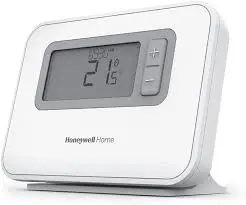In the quest for optimal home comfort and energy efficiency, wireless thermostats have emerged as a game-changer. These innovative devices offer a range of smart solutions for climate control, providing homeowners with unparalleled convenience and precision. This blog post explores the benefits and functionalities of wireless thermostats, and delves into the specifics of various models and troubleshooting tips.
Understanding Wireless Thermostats

What are Wireless Thermostats?
Wireless thermostats are advanced devices that allow users to control their home heating and cooling systems remotely using wireless technology. Unlike traditional thermostats, which require physical wiring to connect to the HVAC system, wireless thermostats communicate via Wi-Fi or Bluetooth, providing greater flexibility and ease of installation.
Benefits of Wireless Thermostats
Wireless thermostats offer several advantages, including ease of use, energy savings, and enhanced comfort. These devices can be controlled from anywhere using a smartphone or tablet, allowing homeowners to adjust their home’s temperature settings on the go. This remote access ensures that energy is not wasted, as users can turn off the heating or cooling when they are not at home and turn it back on just before they return.
Key Features of Wireless Thermostats

Honeywell Thermostat
The Honeywell thermostat is a popular choice among homeowners due to its reliability and advanced features. Honeywell offers a range of wireless and programmable thermostats that allow for precise temperature control. The Honeywell programmable thermostat, for example, enables users to set different temperatures for different times of the day, ensuring optimal comfort and energy efficiency.
Bluetooth Thermostat
Bluetooth thermostats provide an additional layer of convenience by allowing users to control their heating and cooling systems directly from their smartphones. This feature is particularly useful in homes where Wi-Fi connectivity may be limited. Bluetooth thermostats are easy to install and offer a user-friendly interface for seamless temperature adjustments.
Troubleshooting Common Issues
Carrier Thermostat Troubleshooting
Carrier thermostats are known for their advanced features and reliability. However, like any electronic device, they may encounter issues from time to time. Common problems include the Carrier thermostat not working or displaying error messages. Troubleshooting steps typically involve checking the power supply, ensuring proper connections, and resetting the device. If problems persist, consulting the user manual or contacting customer support is recommended.
Lennox iComfort Thermostat Problems
Lennox iComfort thermostats are designed for high performance, but users may occasionally face issues such as connectivity problems or inaccurate temperature readings. To address these issues, users can perform a system reset, check for firmware updates, and ensure that the thermostat is within range of the Wi-Fi network. Regular maintenance and updates can help mitigate these problems and ensure smooth operation.
Optimizing Thermostat Settings

Winter Thermostat Setting
Setting the thermostat to the optimal temperature during winter is crucial for maintaining comfort and energy efficiency. A common recommendation is to set the thermostat to 68 degrees Fahrenheit when the home is occupied and lower it by a few degrees when it is unoccupied or during the night. This practice helps reduce energy consumption and lowers heating costs.
Auxiliary Heat on Thermostat
Auxiliary heat is a secondary heating source used by heat pumps when the primary system cannot maintain the desired temperature. This feature is typically activated during very cold weather. To ensure efficient use of auxiliary heat, it is important to regularly check the thermostat settings and ensure that the heat pump is functioning correctly. If the auxiliary heat on the thermostat is activated frequently, it may indicate an issue with the primary heating system that requires professional inspection.
Enhancing Home Comfort
Emer Heat on Thermostat
Emergency heat, or “emer heat,” is a setting used when the primary heat pump is not working, and the auxiliary heat becomes the main source of heating. This setting should be used sparingly, as it can lead to higher energy costs. Homeowners should ensure that the primary heating system is regularly maintained to avoid over-reliance on emergency heat.
Rheem Econet Thermostat Review
The Rheem Econet thermostat is a smart thermostat designed to optimize home heating and cooling. It offers advanced features such as energy usage reports, remote control via smartphone, and integration with smart home systems. Reviews highlight its user-friendly interface and reliable performance, making it a valuable addition to any home looking to enhance climate control.
Conclusion
Wireless thermostats provide a smart and efficient solution for managing home climate control. With features like remote access, programmable settings, and compatibility with various heating and cooling systems, these devices offer significant benefits in terms of energy savings and comfort. By understanding the functionalities and troubleshooting common issues, homeowners can make the most of their wireless thermostats and enjoy a more comfortable and efficient living environment. Whether you are considering a Honeywell thermostat, a Bluetooth thermostat, or any other model, investing in wireless technology is a step towards smarter and more efficient home climate control.
